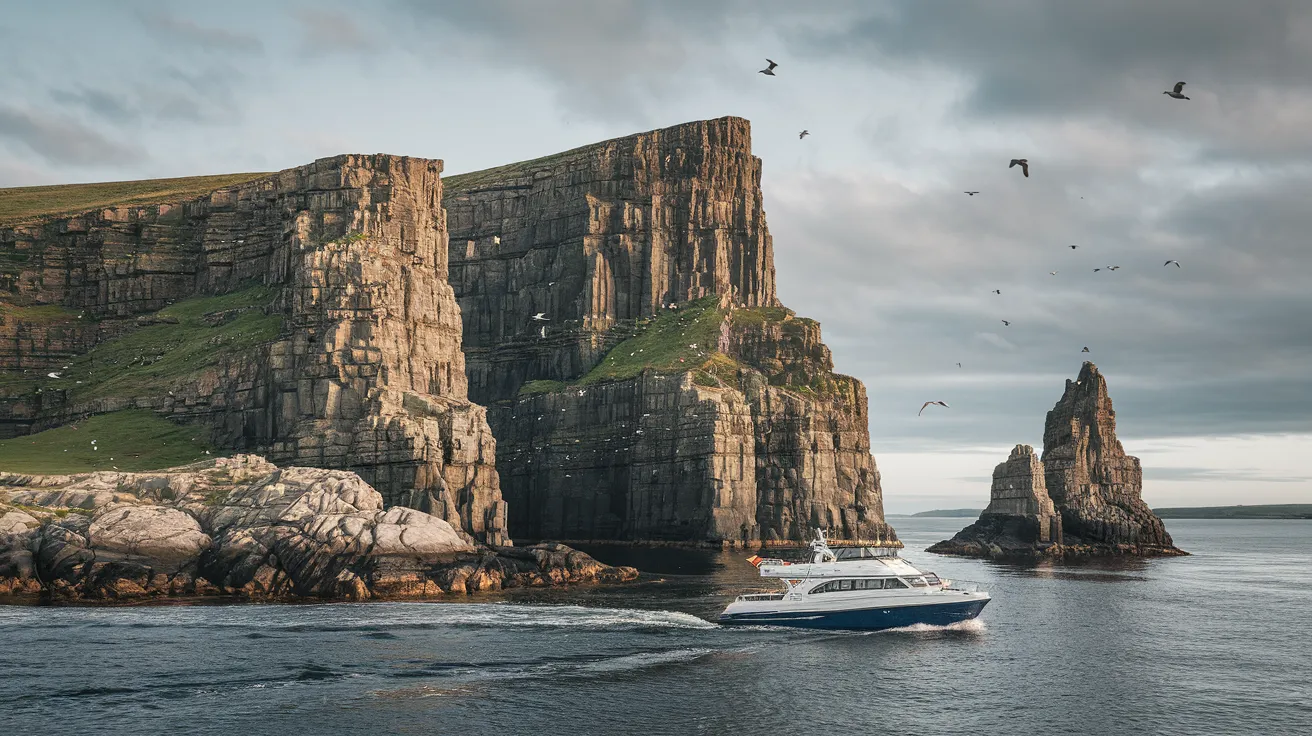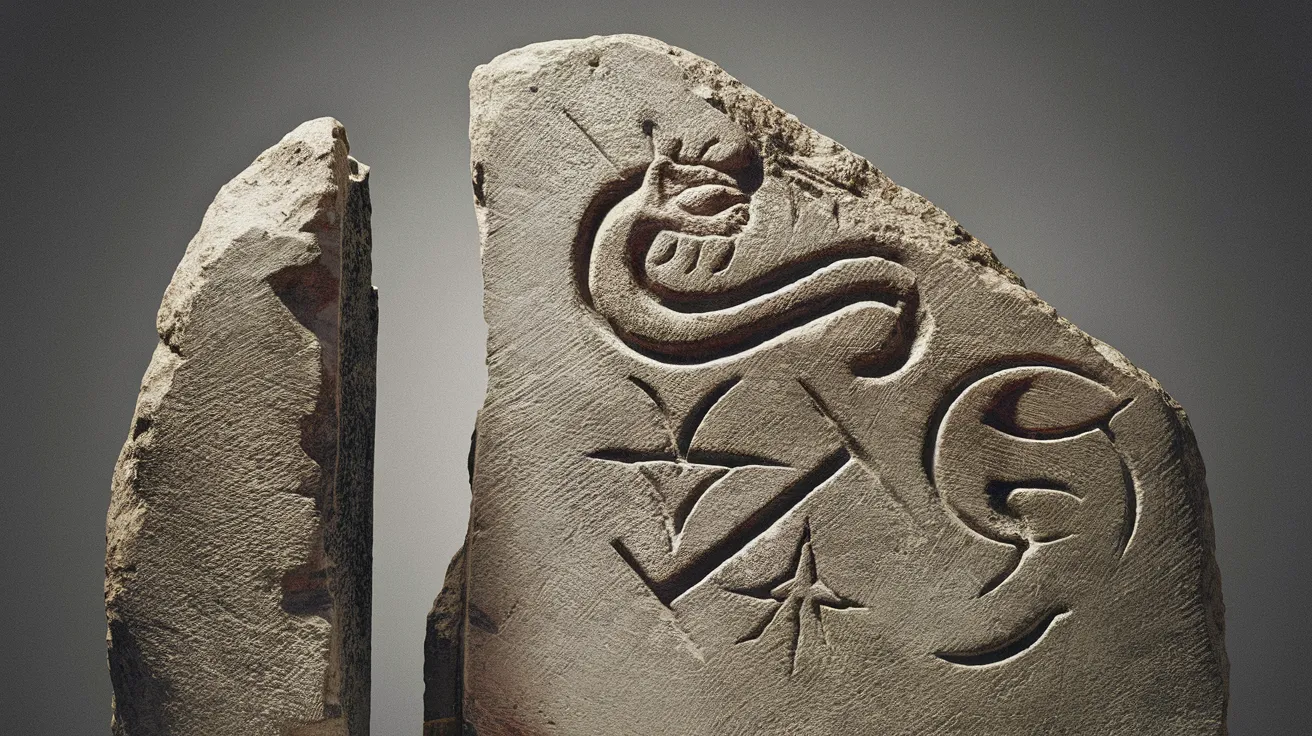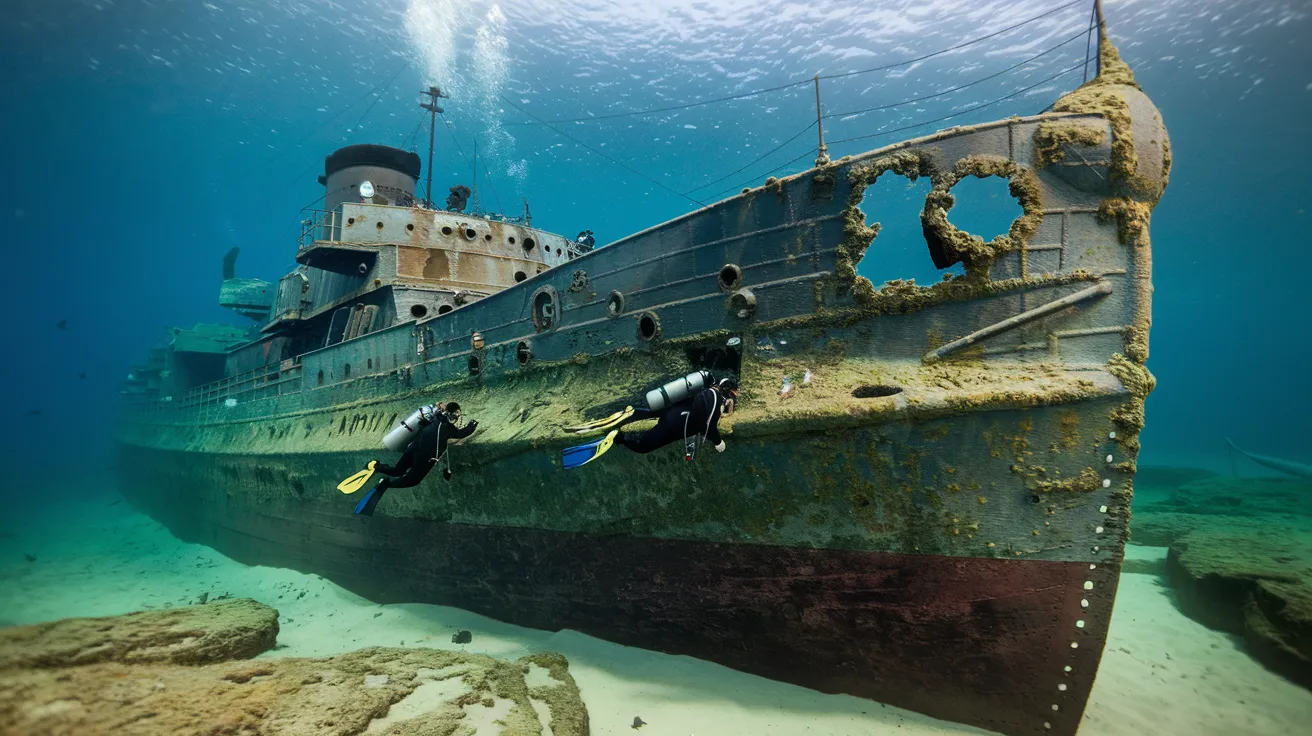Quick Navigation
- Orkney's Marine Mammal Residents and Visitors
- Best Places for Seal Spotting
- Top Spots for Whale and Dolphin Watching
- Orkney's Orcas: The Apex Predators
- Responsible Wildlife Watching: The Scottish Marine Wildlife Watching Code
- Frequently Asked Questions
- When is the best time to see Orcas in Orkney?
- Where is the best place to see seals?
- Do I need to take a boat trip to see whales or dolphins?
- How can I report a marine mammal sighting?
- Are the animals dangerous?
The waters surrounding the Orkney Islands teem with life, offering some of the UK's best opportunities to witness charismatic marine mammals in their natural habitat. From playful seals lounging on skerries to pods of majestic orcas patrolling the firths, Orkney's marine ecosystem is rich and dynamic. This guide explores the diverse species you might encounter, the best locations and times for sightings, and how to watch wildlife responsibly, ensuring these incredible animals continue to thrive.
Orkney's Marine Mammal Residents and Visitors
Over 23 species of marine mammals have been recorded in Orkney waters, drawn by the nutrient-rich currents and abundant food sources. Key species include:
- Grey Seals (Halichoerus grypus): Orkney is a major stronghold, hosting around 15% of Scotland's breeding population (approx. 10,000 seals). They are large seals, with males reaching up to 2.6 metres long, distinguished by their 'Roman nose' profile and parallel nostrils. Pups are born with white coats between October and December.
- Common Seals (Harbour Seals) (Phoca vitulina): Smaller than grey seals (up to 1.85m), with a more dog-like face and V-shaped nostrils. They pup in June and July and are often seen resting in a characteristic 'banana pose' on rocks at low tide.
- Harbour Porpoise (Phocoena phocoena): The smallest and most common cetacean (whale, dolphin, or porpoise) in Orkney, often seen year-round in small groups, especially in tidal areas like Scapa Flow and the Pentland Firth. Look for their small, triangular dorsal fin breaking the surface.
- Risso's Dolphin (Grampus griseus): A robust dolphin species, easily identified by the extensive white scarring adults accumulate over their lifetime. Frequently sighted around Hoxa Head and Scapa Flow, often in summer.
- White-beaked Dolphin (Lagenorhynchus albirostris): A larger, more energetic dolphin often seen in summer months, sometimes in large pods, particularly in offshore waters or the Pentland Firth.
- Minke Whale (Balaenoptera acutorostrata): The most commonly sighted baleen whale, typically seen between May and September, often feeding on herring. Ferry crossings offer good vantage points.
- Orca (Killer Whale) (Orcinus orca): The apex predator of Orkney waters. While sightings can occur year-round, they peak between May and August. Several known pods frequent the area, often seen hunting seals near coastlines and tidal races.
- Less Common Species: Occasional sightings include Humpback Whales, Sperm Whales, Pilot Whales, and Atlantic White-sided Dolphins, usually further offshore.
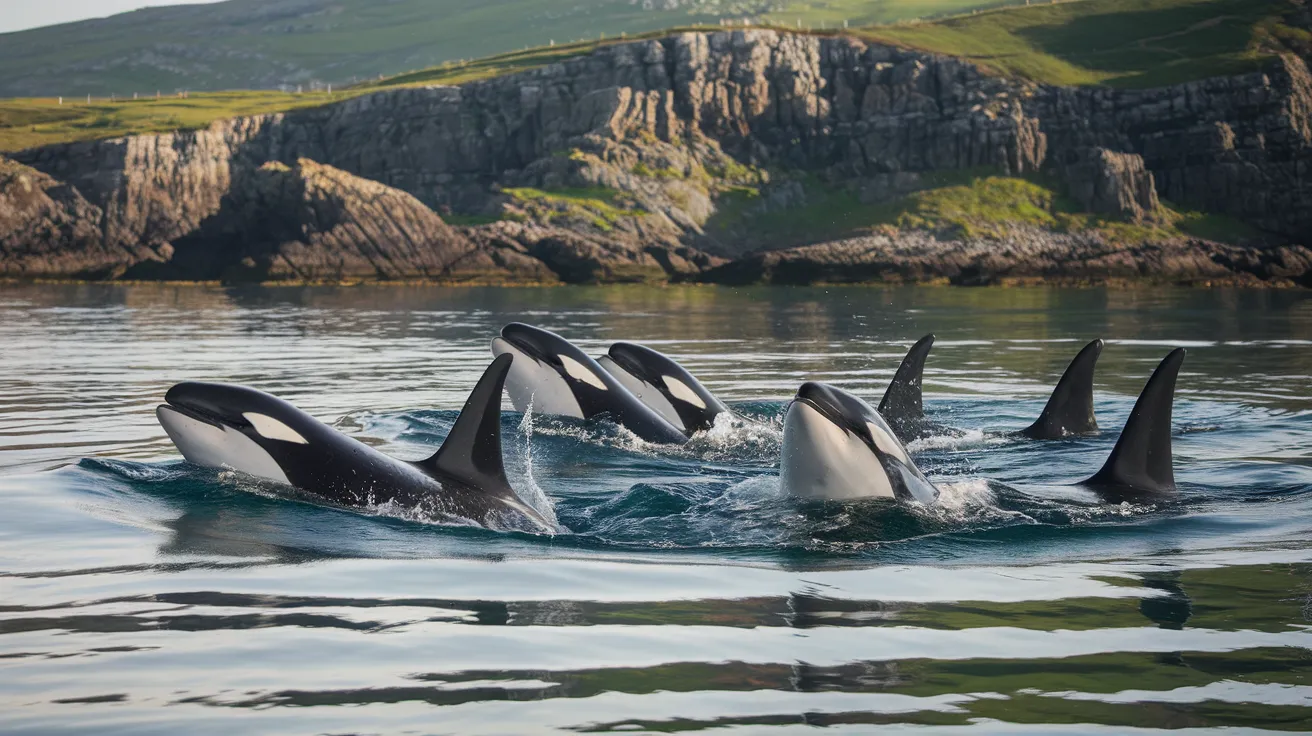
Best Places for Seal Spotting
Seals can be seen all around Orkney's coastline, but some reliable haul-out sites offer excellent viewing opportunities:
- South Ronaldsay: Bays like Widewall Bay, Burwick, and Windwick are known grey seal pupping sites (Oct-Dec). Observe from cliff tops to avoid disturbance.
- St Mary's Village (Mainland): A fantastic spot to see common (harbour) seals hauled out on rocks at low tide, often performing their 'banana pose'.
- Brough of Birsay (Mainland): Both grey and common seals frequent the skerries around the tidal island. Accessible at low tide.
- Smaller Isles: Islands like Copinsay, Sanday, and Westray have significant seal colonies, often visible from coastal paths or inter-island ferries.
Tips for Watching Seals: Always keep a significant distance (at least 100m, especially during pupping season), stay quiet, keep dogs on leads, and never block their access to the sea.
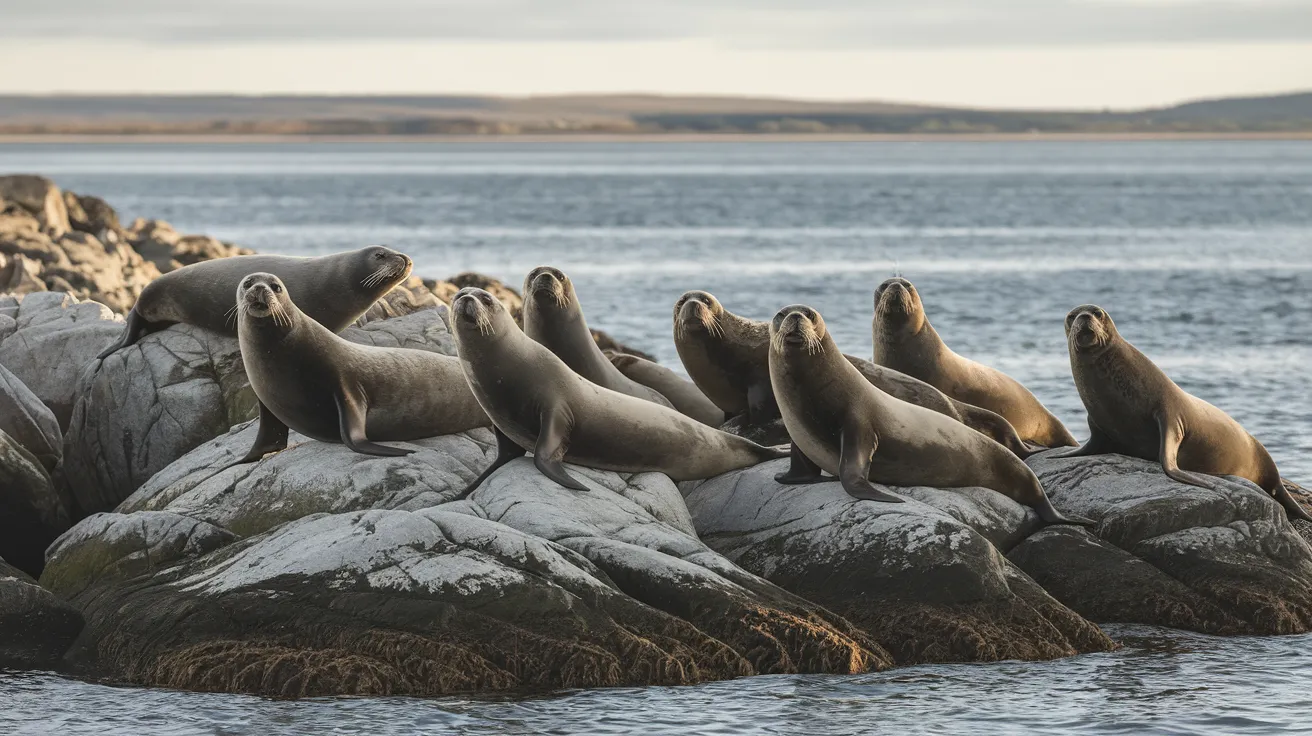
Top Spots for Whale and Dolphin Watching
Patience and luck are key, but these locations increase your chances:
- Coastal Headlands: Elevated viewpoints like Marwick Head, Noup Head (Westray), Mull Head (Deerness), and Hoxa Head offer wide sea views, ideal for scanning for fins or blows. Summer months are generally best.
- Ferry Routes: Crossings through the Pentland Firth (Scrabster/Gills Bay routes) are hotspots for harbour porpoises, minke whales, and occasionally dolphins or orcas. Inter-island ferries also offer opportunities. Keep binoculars handy!
- Scapa Flow: This large body of water can host harbour porpoises, Risso's dolphins, and sometimes minke whales or orcas, particularly near the entrances like Hoxa Sound or Switha Sound.
- Tidal Races: Areas with strong currents, like the Pentland Firth or Eynhallow Sound, concentrate prey and can attract feeding cetaceans.
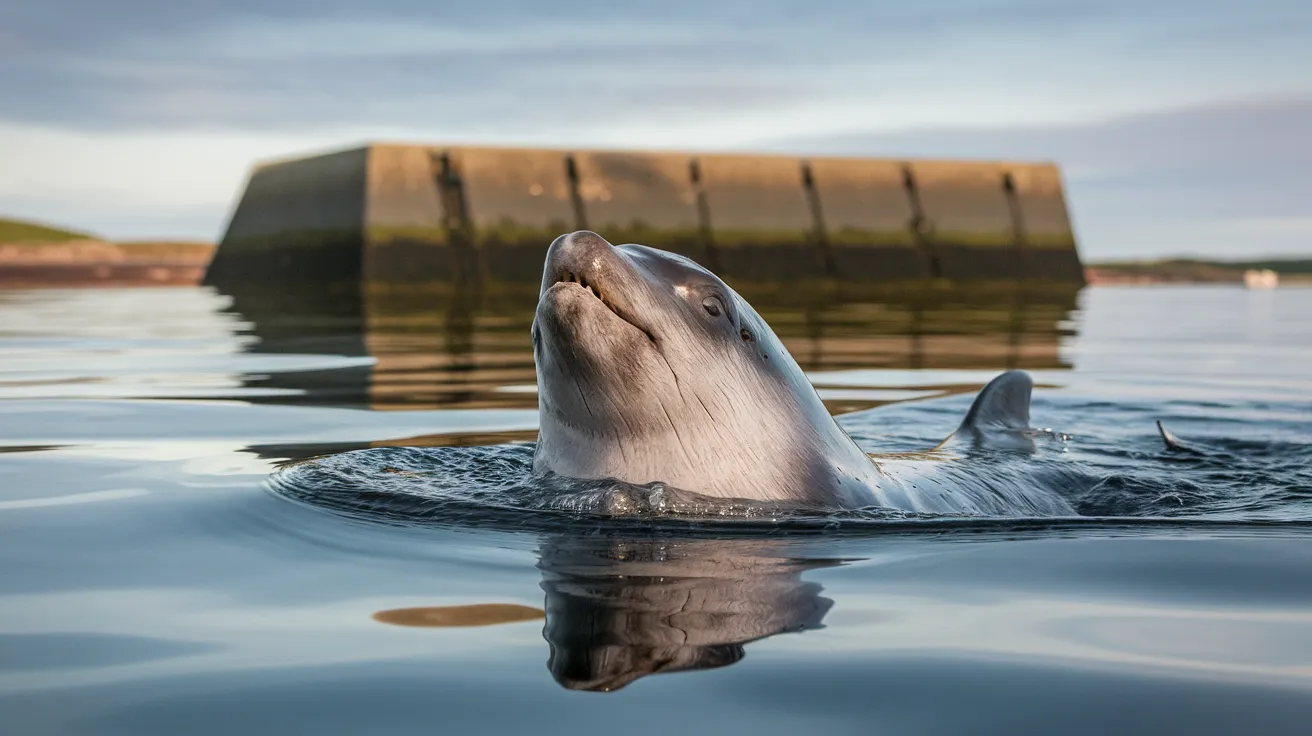
Orkney's Orcas: The Apex Predators
Orkney is arguably the best place in the UK to see Orcas (Killer Whales). While sightings are never guaranteed, they are most frequent between May and August when pods follow seal populations.
- Behaviour: Orcas are often seen actively hunting seals close to shore, sometimes using sophisticated techniques like 'wave washing' seals off skerries.
- Reporting Sightings: The local community plays a vital role in tracking pods. Report sightings immediately (with location, time, number of individuals, and photos/videos if possible) to the Orkney Cetacean Group on Facebook or the Orkney Marine Mammal Research Initiative (OMMRI). This helps researchers understand their movements and behaviour.
- Identification: Experienced watchers can identify individual orcas and pods by unique markings on their dorsal fins and saddle patches.
Responsible Wildlife Watching: The Scottish Marine Wildlife Watching Code
It's crucial to observe marine life without causing disturbance. Always follow the Scottish Marine Wildlife Watching Code (SMWWC) guidelines:
- Maintain Distance: Stay at least 100m away from seals and cetaceans (300m for whales with calves). Let the animals control the encounter.
- Be Predictable: Avoid sudden changes in speed or direction if in a boat. Approach animals slowly from the side, never head-on or from behind.
- Limit Viewing Time: Keep encounters brief (e.g., 15-20 minutes) to minimize stress on the animals.
- Avoid Crowding: Limit the number of boats around animals (max 3 recommended).
- Never Feed Marine Mammals.
- Be Extra Cautious During Breeding Seasons: Give seals extra space during pupping (Oct-Dec for Greys, Jun-Jul for Commons).
Respecting these guidelines ensures that wildlife watching remains sustainable and doesn't harm the animals or their environment.
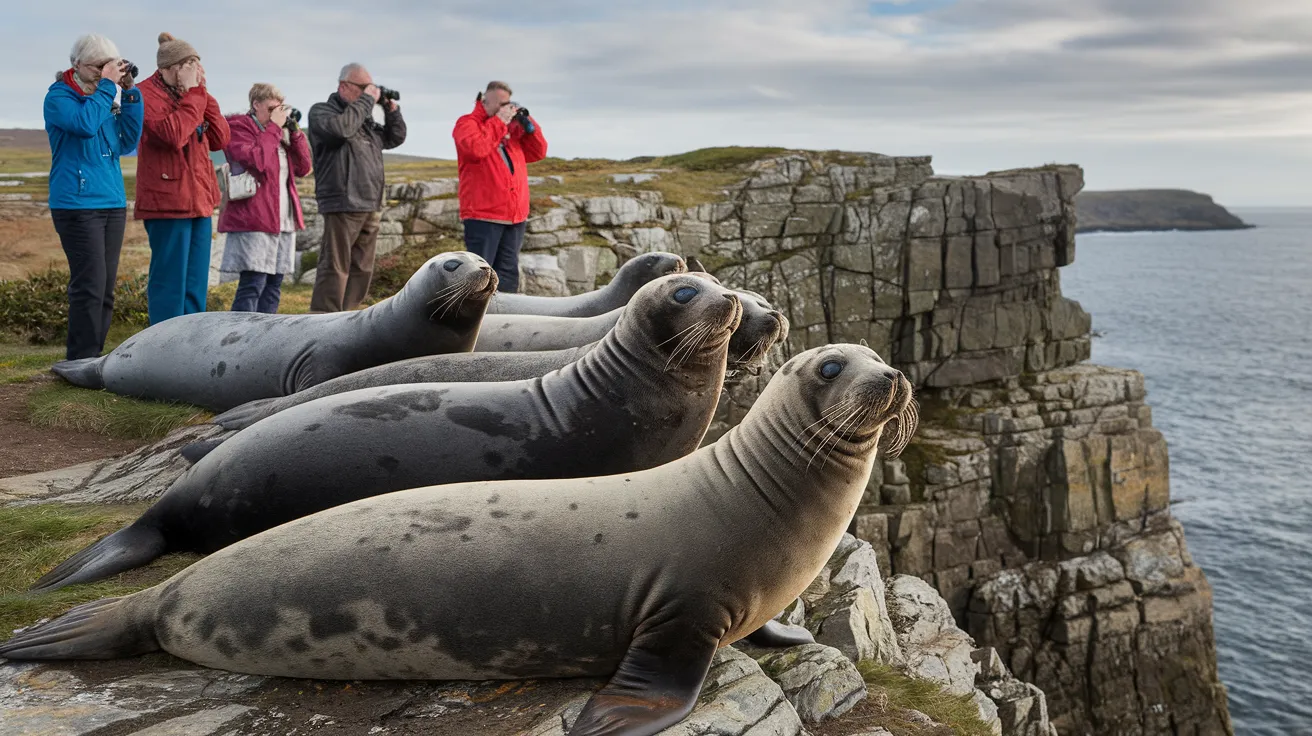
To find relevant videos, search YouTube for "Orkney Orca sightings" or "Orkney seal colony".
Frequently Asked Questions
When is the best time to see Orcas in Orkney?
While possible year-round, sightings peak between May and August.
Where is the best place to see seals?
Numerous haul-out sites exist. St Mary's Village (Mainland) for common seals at low tide, and Widewall Bay (South Ronaldsay) or Brough of Birsay for grey seals are reliable spots.
Do I need to take a boat trip to see whales or dolphins?
Not necessarily. Many sightings occur from coastal headlands or ferries. However, dedicated wildlife boat tours can increase your chances and offer different perspectives.
How can I report a marine mammal sighting?
Use the Orkney Cetacean Group on Facebook or contact the Orkney Marine Mammal Research Initiative (OMMRI).
Are the animals dangerous?
Marine mammals are wild animals and should be treated with respect. Maintain a safe distance and never attempt to touch or feed them. Orcas pose no threat to humans in the wild.
Orkney's marine environment is a precious resource, offering thrilling wildlife encounters for patient and respectful observers. Whether watching seals bask on the shore or scanning the horizon for a dorsal fin, the potential for unforgettable moments is ever-present. Choose Orkney accommodation with sea views or near coastal paths to maximize your chances of spotting these magnificent creatures.

